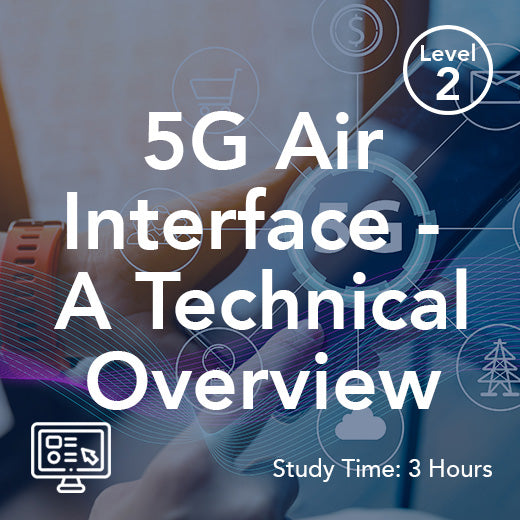DVB-S2 Explained: A Clear Guide to Satellite Broadcasting
- , by Stephanie Burrell
- 9 min reading time
Satellite broadcasting is a fascinating aspect of modern communication, and at its heart lies the DVB-S2 standard, which supports interactive services . This technology revolutionises how we receive television and data transmissions from satellites, offering improved efficiency and quality over its predecessor. Whether you're a tech enthusiast or simply curious about how those satellite dishes work, understanding DVB-S2 is key to appreciating the seamless delivery of high-definition content into our homes. In this guide, we will demystify DVB-S2, explaining its advantages and how it powers the world of satellite broadcasting in a straightforward manner. Let’s embark on this journey to explore the nuts and bolts of satellite transmission.
Understanding DVB-S2 Basics
DVB-S2 is the cornerstone of modern satellite broadcasting. To appreciate its impact, we need to grasp its fundamentals. This section will introduce the standard, its features, and its edge over the older DVB-S standard.
What is DVB-S2?
DVB-S2 stands for Digital Video Broadcasting - Satellite - Second Generation. It is an enhanced satellite broadcast standard developed to deliver superior quality and efficiency. Unlike its predecessor, DVB-S2 offers higher bandwidth and better error correction, making it more reliable for high-definition broadcasting.
The standard is widely used for broadcasting television channels, providing internet connectivity, and enabling data transmissions via satellites. It utilises advanced modulation techniques to maximise data throughput, which is crucial for delivering a vast array of media content.
DVB-S2's introduction marked a significant evolution in satellite technology, addressing the growing demand for better picture quality and more channels. Today, it remains a prevalent choice in the broadcasting industry, ensuring that content reaches audiences worldwide with minimal disruption.
Key Features of DVB-S2
Key features of DVB-S2 include its advanced modulation, error correction techniques, and innovative channel coding. The standard uses Adaptive Coding and Modulation (ACM) to adjust signal parameters in real-time, optimising the transmission according to varying conditions.
Scalability is another standout feature, allowing broadcasters to send multiple channels over a single satellite transponder, contributing to spectrum efficiency . This improves the efficiency of bandwidth usage, making DVB-S2 a cost-effective solution for operators.
Furthermore, the standard supports Variable Coding and Modulation (VCM), which provides flexibility in delivering different types of content with varying quality needs. This makes DVB-S2 adapt to both high-definition broadcasts and standard-definition signals seamlessly.
Advantages Over DVB-S
The advantages of DVB-S2 over DVB-S are numerous. Firstly, optimized bandwidth efficiency allows for more channels and better quality within the same frequency band. This is due to its superior modulation schemes.
Another critical advantage is the enhanced error correction and optimized code rate , which significantly reduces the chance of data loss during transmission. This leads to a more stable and clear broadcast signal, even under adverse weather conditions.
The ability to adapt signal parameters dynamically ensures consistent quality, making DVB-S2 more robust and reliable. These features collectively make DVB-S2 a preferred choice for modern broadcasting needs.
Technical Aspects of DVB-S2
To understand DVB-S2 thoroughly, it's crucial to delve into its technical components. This section covers the modulation and coding techniques, error correction methods, and bandwidth efficiency that define the standard.
Modulation and Coding
DVB-S2 uses sophisticated modulation and coding techniques to enhance broadcasting efficiency. The standard employs QPSK and 8PSK modulation, enabling higher data rates compared to DVB-S.
-
Quadrature Phase Shift Keying (QPSK): Suitable for channels where reliability is key, offering a balance between efficiency and robustness.
-
8 Phase Shift Keying (8PSK): Provides higher data throughput, ideal for high-definition content.
-
Low-Density Parity-Check (LDPC) Codes: Essential for error correction, ensuring data integrity over long distances.
This combination allows DVB-S2 to deliver both reliable and high-quality transmissions, vital for modern broadcasting demands.
Error Correction Techniques
Error correction is pivotal in maintaining data integrity. DVB-S2 employs Low-Density Parity-Check (LDPC) and Bose-Chaudhuri-Hocquenghem (BCH) codes for this purpose.
LDPC codes are known for their efficiency in correcting errors, allowing the system to transmit data over longer distances with minimal loss. This is crucial for satellite communications, where signals travel vast distances.
BCH codes complement LDPC by providing additional error correction, further enhancing signal reliability. Combined, these techniques ensure that DVB-S2 can deliver high-quality broadcasts without interruptions.
Bandwidth Efficiency
Bandwidth efficiency is a hallmark of DVB-S2. The system utilises advanced modulation to transmit more data within a given bandwidth.
-
Adaptive Coding and Modulation (ACM): Adjusts transmission parameters in real-time for optimal performance.
-
Variable Coding and Modulation (VCM): Offers flexibility in delivering diverse content types.
This ensures that DVB-S2 can efficiently use available spectrum, reducing operational costs and enhancing service quality for broadcasters.
Applications of DVB-S2
DVB-S2's versatile capabilities make it suitable for a variety of applications. From broadcasting television to delivering internet services, this section explores the diverse uses of this technology.
Broadcasting Television Channels
DVB-S2 is instrumental in broadcasting television channels. It supports high-definition broadcasts, making it indispensable for delivering crisp, clear images to viewers.
This standard allows broadcasters to transmit multiple channels simultaneously, providing audiences with a rich array of content. For example, sports channels benefit immensely from DVB-S2's high data rates, ensuring seamless, high-quality broadcasts of live events.
-
High-definition support: Enhances viewer experience with superior picture quality.
-
Multichannel transmission: Increases content variety without additional bandwidth.
Internet via Satellite
Providing internet via satellite is another critical application of DVB-S2. Remote areas, where traditional broadband infrastructure is lacking, benefit significantly from this technology.
DVB-S2 enables high-speed internet access, bridging the digital divide for underserved regions. This is vital for communities in rural or isolated locations, where it serves as a primary communication link.
-
Expands connectivity: Reaches remote areas with high-speed internet.
-
Reliable access: Ensures continuous connectivity even in adverse weather conditions.
Data Transmission Solutions
DVB-S2 also facilitates efficient data transmission solutions for various professional applications . It is used in corporate networks, government communications, and emergency services, where reliable data delivery is crucial.
The standard's adaptability allows it to cater to various data requirements, ensuring secure and efficient transmission. Industries that require large data transfers benefit from DVB-S2's reliability and speed.
-
Corporate networks: Supports secure and efficient data exchange.
-
Emergency services: Provides reliable communication channels in critical situations.
Implementing DVB-S2 Technology
Implementing DVB-S2 involves understanding the necessary equipment and overcoming challenges. This section will guide you through the practical aspects of deploying this technology.
Equipment and Setup
Setting up DVB-S2 requires specific equipment and setup. Key components include satellite dishes, receivers, and decoders, each playing a crucial role in the transmission process.
-
Satellite Dish: Captures the satellite signal, must be correctly aligned for optimal performance.
-
Receiver: Decodes the signal and converts it into viewable content.
-
Decoder: Processes received data, ensuring it is displayed accurately.
A well-planned setup ensures that the DVB-S2 system operates efficiently, delivering high-quality content to end-users.
Challenges and Solutions
Implementing DVB-S2 comes with its challenges, such as signal interference and equipment costs. However, solutions exist to address these issues effectively.
-
Signal Interference: Can be mitigated by ensuring proper dish alignment and using high-quality cables.
-
Equipment Costs: While initial investments can be high, the long-term benefits of DVB-S2 often justify these expenses.
These solutions ensure that broadcasters can fully leverage DVB-S2's capabilities, providing reliable and high-quality services.
Future of DVB-S2 in Broadcasting
The future of digital satellite DVB-S2 in broadcasting looks promising. As technology advances, DVB-S2 continues to evolve, offering even greater efficiency and quality.
-
Increased bandwidth capabilities: Allow for more channels and better quality.
-
Integration with new technologies: Enhances its adaptability and usefulness.
DVB-S2 remains a cornerstone of satellite broadcasting, adapting to changing needs and technological advancements.
Comparing DVB-S2 with Other Standards
Comparing DVB-S2 with other broadcasting standards reveals its strengths and potential areas for improvement. This section provides a comprehensive overview of these comparisons.
DVB-S2 vs DVB-T2
|
Feature |
DVB-S2 |
DVB-T2 |
|---|---|---|
|
Transmission |
Satellite |
Terrestrial |
|
Efficiency |
Higher bandwidth efficiency |
Higher in urban settings |
|
Coverage |
Global |
Regional |
|
Weather Impact |
Less susceptible |
More susceptible |
DVB-S2 offers global coverage and is less affected by weather, whereas DVB-T2 is more efficient in densely populated areas.
Satellite vs Cable Broadcasting
Satellite and cable broadcasting offer distinct advantages. DVB-S2, with its satellite transmission, excels in providing wide coverage, making it ideal for remote areas.
|
Feature |
Satellite (DVB-S2) |
Cable |
|---|---|---|
|
Coverage |
Wide, including remote locations |
Limited to urban areas |
|
Installation |
Requires satellite dish |
Requires cabling infrastructure |
|
Quality |
High-definition support |
Dependent on local infrastructure |
Satellite broadcasting is advantageous for its extensive reach, but cable can offer more consistent quality in areas with robust infrastructure.
Next-Generation Advancements
The future of broadcasting lies in next-generation advancements. DVB-S2 continues to evolve, integrating with emerging technologies to enhance its capabilities.
Key advancements include:
-
Higher efficiency: Through better modulation and compression techniques.
-
Greater integration: With IP-based technologies and networks.
These advancements ensure that DVB-S2 remains at the forefront of satellite broadcasting, ready to meet future challenges and opportunities, including enhancements in audio quality .


































